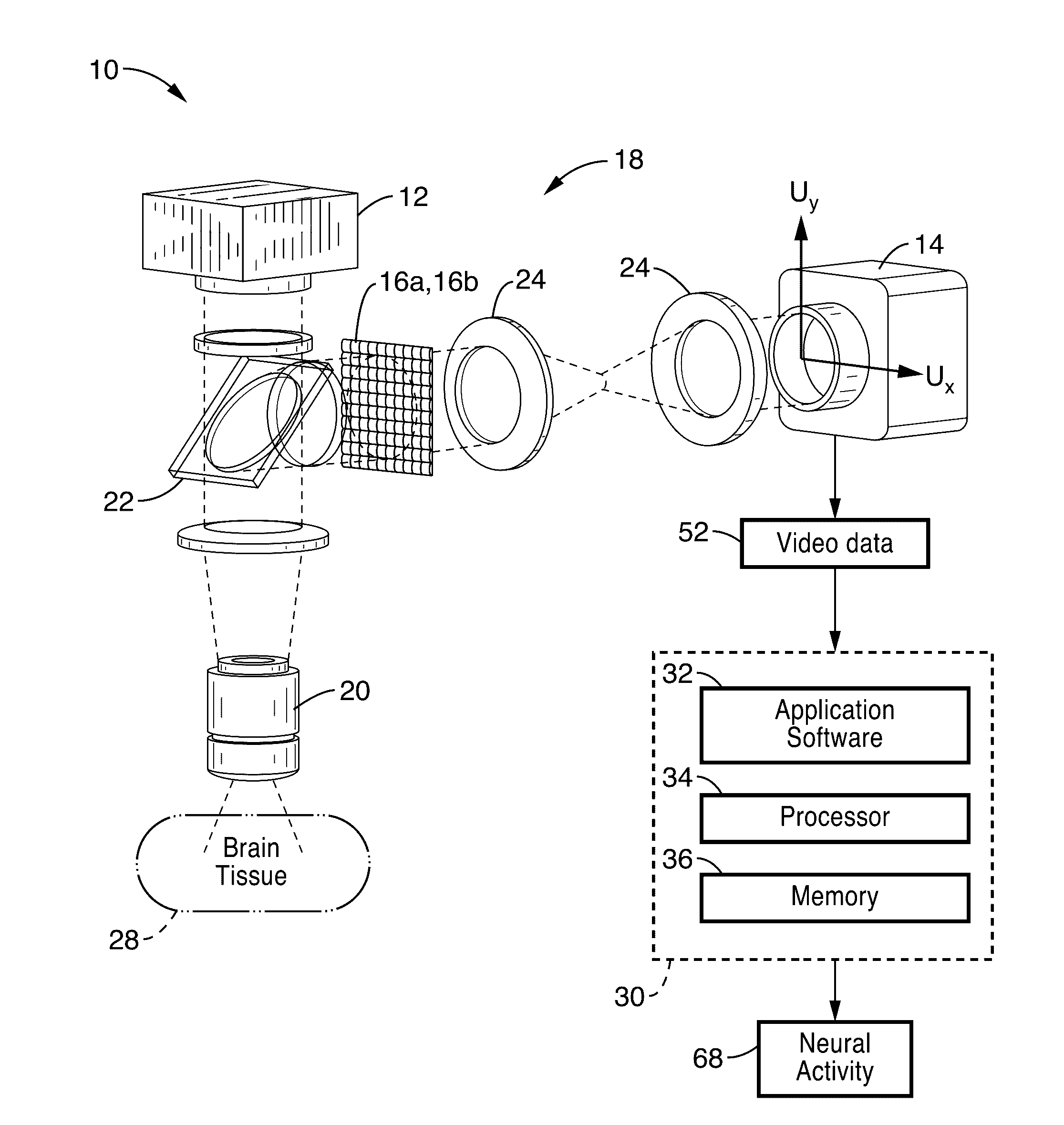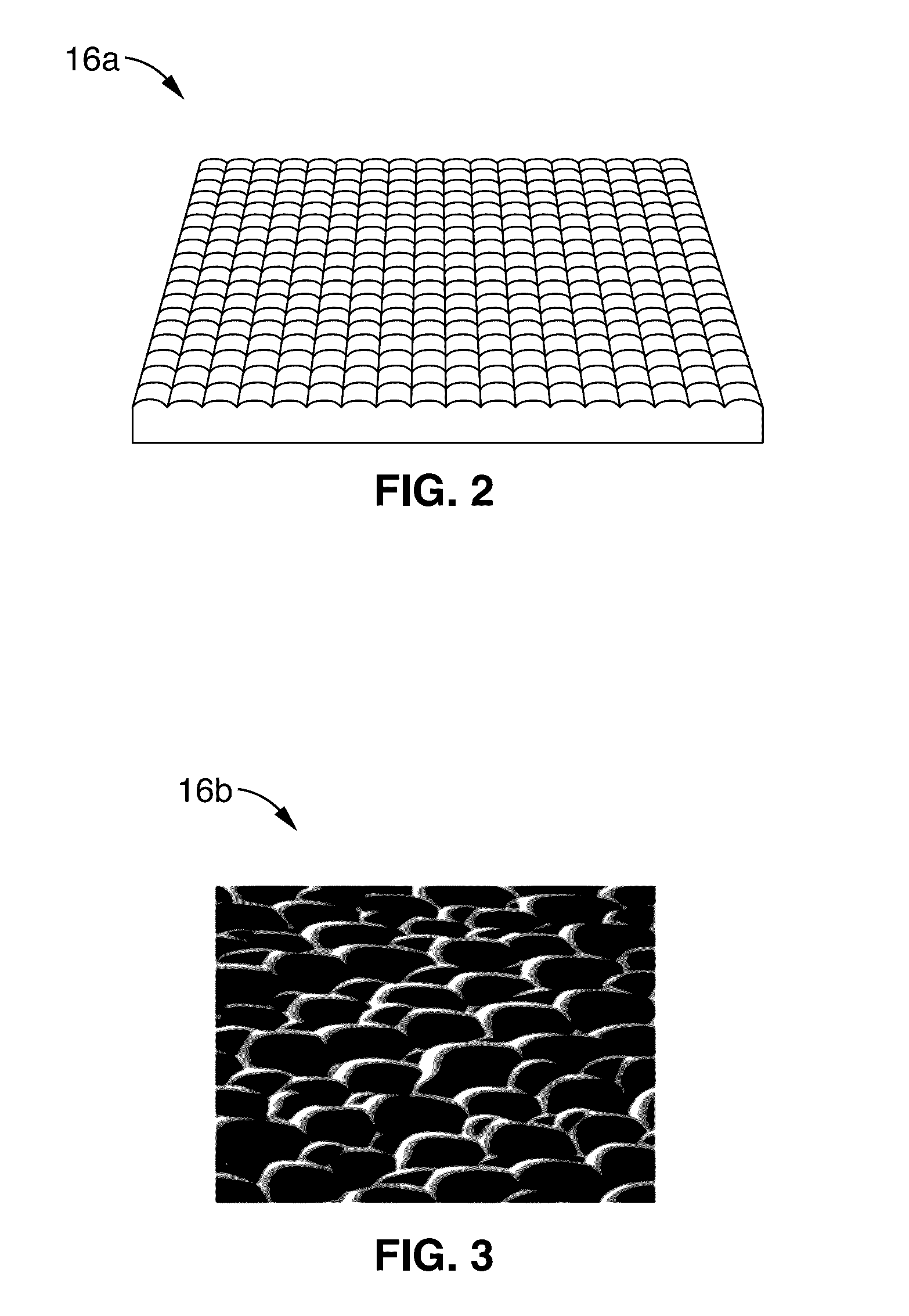Compressive plenoptic microscopy
a plenoptic microscopy and compression technology, applied in the field of medical imaging, can solve the problems of reducing the accuracy of image enhancement, requiring fast controlled mechanical scanning, and significantly limiting temporal resolution, so as to achieve fast quantification of activity and maximize information
- Summary
- Abstract
- Description
- Claims
- Application Information
AI Technical Summary
Benefits of technology
Problems solved by technology
Method used
Image
Examples
Embodiment Construction
[0031]FIG. 1 shows a schematic view of an embodiment of a plenoptic imaging system 10 in accordance with the present description. In the embodiment shown in FIG. 1, the system 10 is shown implemented with a fluorescence microscope 18, which may comprise a device specific for use with light field microscopy, or may alternatively comprise a modified fluorescence microscope with an engineered phase mask placed in the imaging plane. It is also appreciated that other devices, such as lens-free fluorescence imager 100 shown in FIG. 10, may also be used in place of microscope 18.
[0032]As seen in FIG. 1, an excitation light source 12 (e.g. LED at 488 nm) is directed at brain tissue 28 via intervening optics (e.g. fluorescence filter cube 22 (which may comprise dichroic mirrors / filters) and objective 20. It is to be noted that the brain tissue mass 28 is shown in FIG. 1 in block form; however, the non-invasive methods of the present description are configured to direct light from source 12 i...
PUM
 Login to View More
Login to View More Abstract
Description
Claims
Application Information
 Login to View More
Login to View More - R&D
- Intellectual Property
- Life Sciences
- Materials
- Tech Scout
- Unparalleled Data Quality
- Higher Quality Content
- 60% Fewer Hallucinations
Browse by: Latest US Patents, China's latest patents, Technical Efficacy Thesaurus, Application Domain, Technology Topic, Popular Technical Reports.
© 2025 PatSnap. All rights reserved.Legal|Privacy policy|Modern Slavery Act Transparency Statement|Sitemap|About US| Contact US: help@patsnap.com



